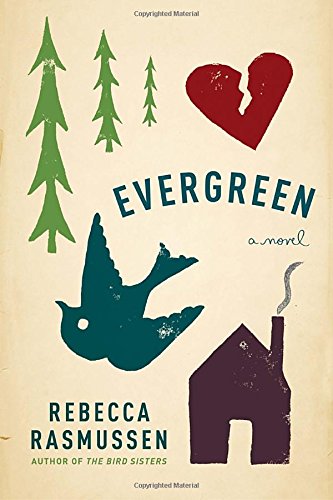Evergreen
In a tiny cabin surrounded by forest in Evergreen, Minnesota, there’s a lot of life lived, secrets kept, and the past preserved in Rasmussen’s tale. Eveline and Emil start their life together in this cabin in the 1930s; they are alone, and Eveline is lonely. The nearest town is twenty miles away, so she spends her days reading Emil’s taxidermy books and drawing the forest creatures. When Hux is born, the family feels more secure in this hard place. Then Emil returns to Germany to visit his ailing father, and becomes trapped by the Nazis and war.
Eveline struggles again, to survive, to get life out of the land, to maintain hope that Emil will return. She’s befriended by crazy Lulu—that’s how she’s known in town—and gradually learns to fish, to garden, and to trust others. That naïve trust goes awry when Cullen, a handsome representative from the power company, comes to assess the property. From that day, Eveline carries a secret so dark that even Lulu’s best efforts to right the situation are of no use.
In powerful, spare prose, Rasmussen shows the long-term effects of a heartbroken mother’s decision. Eveline’s inability to forgive herself, and let herself love (and be loved), is reflected in the second part of the novel, which focuses on the next generation. Descriptions of orphanage life, of post-war small town society, and of men in the logging camps ring true, and show more than just a peek at the dark side of human behavior. Readers will find many reasons to root for good to win out, just as they will find much to admire in the well-drawn characters who want to belong, to live, and love, in the forest of Evergreen.










